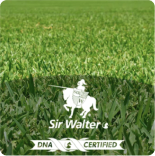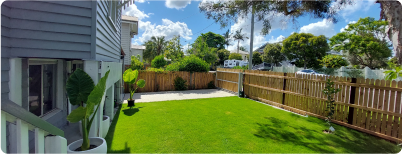For this week’s turf tip, we have called an expert to break down the ins and outs of installing a lawn irrigation system. A big thank you to Turf Irrigation Services for lending us their expertise.
One of the best ways to ensure your lawn and garden gets the correct amount of water at the right time of the day is to install a lawn irrigation system. Installing an irrigation system will ensure that over watering your lawn or garden doesn’t happen and the correct amount of water is applied at the right time of the day. All too often we can tend to overwater our lawns and gardens therefore wasting water, time and energy. An automatic lawn irrigation system will regulate the correct amount of water required and allow you to focus on other more important things. Also, making sure your lawn gets the correct amount of water will encourage a strong root structure and a healthier lawn.
An automatic irrigation system, which can be adjusted to the individual needs of different plantings and your lawn, will give you a thicker, greener lawn and more beautiful gardens, as you save time and water.
Here are some points to take into consideration when planning to install a lawn irrigation system.
Two Different Styles of Irrigation
There are two different styles of irrigation systems to choose from, traditional sprinkler-based systems and drip irrigation systems. If you have both a lawn and a garden, using both a sprinkler-based and drip irrigation system will allow both areas to be watered with the correct amount of water.
Traditional sprinkler-based systems are well suited to watering large areas of grass and large garden beds that have plants with similar watering needs. They water uniformly by irrigating in well-defined patterns, for example, 1.5 metres or more in diameter. To irrigate smaller areas, we recommend drip irrigation. Drip irrigation is the ideal complement to traditional irrigation. Rather than irrigating large areas, a drip system is set up to water very small, specific areas. For that reason, drip systems are good for garden beds, specific plants with different watering requirements and patio plants. Drip systems use little water and discourage weed growth. To create the best irrigation system possible for your home garden, consider both a traditional sprinkler-based irrigation and drip filter system for the best results.
Initial Steps in Planning
Before you begin, there are some points to take into consideration. Contact your local Council for information on building codes and required permits. They can also tell you about requirements for the backflow prevention devices required in your area. These devices protect your water supply from contamination and are required for in-ground irrigation systems.
Draw a plan of the areas you need watering, that is the lawn, any garden beds and/or patio plants. Make sure you include the actual house in the diagram and the location of outside taps, driveways, pathways and other areas that don’t require watering. Allow for any sloped areas that water may run off.
Also, identify your soil type. This will enable you to calculate just how much water is required for your lawn and garden. To determine your soil type, that is sand, loam, or clay, get a clean, empty jar with a lid, some clean water, a tablespoon of detergent and a sample of the soil you want to test. Fill the jar about 1 /3 full of the soil to be tested. Fill the jar with water and detergent then cap it. Shake the jar vigorously and set aside for several hours or overnight. If the water is clear and the soil has settled to the bottom, you have predominantly sandy soil. If the water is still murky with bits of matter still suspended in it, you have loam soil. If the water is still murky, and there is a visible ring of sediment around the jar, then your soil is mostly clay.
Determining the water pressure in your home is the next step in the planning process. This will affect which sprinklers are best suited for the water pressure in your home. The easiest way to do this is to get a 1 to 2 litre water jug and a stop watch (use your phone). Place your jug under the tap you’ll be connecting your irrigation system to and turn it on. Time it for 6 seconds on your stopwatch and turn the tap off. Multiply the amount of water in the jug in litres and multiply this by 10. (For example, 0.8 litres x 10 = 8 litres per minute). If the flow rate is less than 10 litres per minute you have low water pressure. Anywhere between 10 to 15 litres per minute is acceptable but can be improved. A flow of above 15 litres per minute is considered good. There are many ways to improve the water pressure in your home and a licensed plumber or your local Council will be able to advise you further on this.
Create Different Zones
Now it is time to start planning the installation of your lawn irrigation system. The best way to do this is to create ‘zones’ in your garden. You’ll need different sprinklers and drip systems for different jobs in the garden. Depending on the area of lawn needing irrigation will determine what size sprinkler you will need. Consider any slope or fall in your land as you want to avoid any water run-off. Determine which plants will need watering and if they need a lot of water, the soil type and the position for effective drip watering.
For good coverage of watering your lawn, layout your sprinkler heads so that the spray from one reaches all those adjacent to it. Head-to-head coverage ensures uniform water application, which saves water and creates the best possible results.
Also, take into consideration some of the more technologically advanced irrigation controllers. They are controlled via Wi-Fi and can be operated anywhere in the world via your mobile phone using an app. They are also connected to local weather reports and installing a rain sensor at the same time will allow you to turn off any scheduled watering if it starts raining. Alternatively, if you have your irrigation system programmed not to come on due to forecast rain and it doesn’t, you can set the irrigation system to turn on. These types of irrigation controllers can be programmed with complete accuracy depending on your location, your plant and lawn types, weather patterns etc therefore saving you time, money and avoid wasting water.
Once you have calculated this information, it’s time to start installing your lawn irrigation system.
Installation Process
Before you start digging, you will need to be aware of any underground pipes and cables etc so it is best to contact your utility companies to check.
For the best prices in irrigation supplies and equipment, Turf Irrigation Services can advise the best equipment for the irrigation system in your home and garden.
With many products on the market with many different purposes, speaking to the experts can ensure you are on the right track and you get the right lawn irrigation system for your home.
About Turf Irrigation Services
With over 26 years’ experience in the irrigation industry, the expert team at Turf Irrigation Services can give you all the support and technical advice you need.
Turf Irrigation Services can also provide a no obligation, free quote to calculate exactly what type of lawn irrigation system is best for your lawn and garden and install it for you.
Contact Turf Irrigation Services on 3245 6000 to arrange a quote.
To order your new lawn to install after you have finished your lawn irrigation system call our sales team on (07) 3114 8281. You can also to pop in and order in person at our sales office on 1/243 Bradman Street, Acacia Ridge. The office opens Monday to Friday 7am to 5pm and Saturday 7am to 12pm.
For more great turf, tips keep an eye on our website and all our social media channels.













